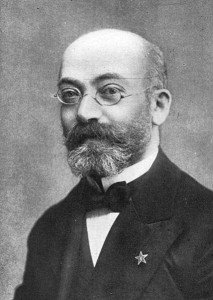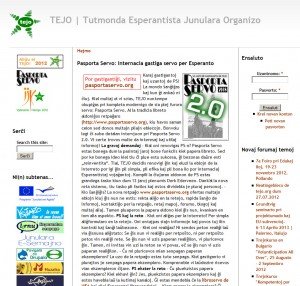What is Esperanto?
Despite the international power of the English speaking world, Esperanto (celebrating its 125th birthday this year) is considered to be the universal language of our time by at least two million people who use the language every day just like any other.
Created in Warsaw on the 26th July 1887 by the young, 27 year-old, Polish ophthalmologist, Ludwig Zamenhof, Esperanto attempts to break down language barriers that exist between different countries and different cultures. It was Zamenhof’s idea to eradicate the problems that we encounter when we are unable to communicate in a common language. It was Zamenhof’s hope to create a universal understanding through Esperanto (esperanza being the Latin based word for hope).
Esperanto’s Journey Through History
In Nazi Germany, Esperanto was associated with rebel movements and many people who spoke the language were persecuted because it was believed that Esperanto speakers formed part of the Jewish conspiracy to enslave members of the Arian race, for example. During the formative years of the 20th Century in Spain, the working classes saw the language as the perfect vehicle towards the development of a society built on equal opportunities.
In the 1980s, thanks to the huge development of the Internet, Esperanto experienced an increase in popularity once more (it experienced its very own kind of renaissance, as it were) as more and more people began to learn the language via Internet courses and online programs. In 1991, Pope John Paul II was the first Pope ever to use Esperanto in a public address and in 2012 (having celebrated its 125th birthday) it is one of the most widely-distributed languages on the planet.
In fact, out of the 6000 most popular languages spoken and understood worldwide, Wikipedia ranks Esperanto as the 27th most utilized language when it comes to online articles and social networking platforms, including Facebook.
Some Fascinating Facts about Esperanto
Owing to the innovative purpose behind its creation (the idea of generating a universal language that will forever prevent communication barriers in the future), fascinating facts about Esperanto abound. Some of the most interesting are as follows:
- World renowned writer, Leo Tolstoy, was an Esperanto speaker and avid fan of the language.
- It is believed that there are roughly two million Esperanto speakers living in the world today.
- In Mexico alone, The Mexican Esperanto Federation can verify that roughly 800 people take online language courses in Esperanto every year.
- Google, Skype, Firefox and Facebook are all available in Esperanto.
- Many foreign language students across the world are choosing to study Esperanto as one of their language choices owing to the fact that, with few grammar irregularities to take into account, it’s fairly easy and quick to learn.
- The Esperanto alphabet is made up of 28 letters and each letter has its own particular sound.
- Approximately 70% of Esperanto’s language roots are Latin-based.
- Most of the words are created by mixing and matching prefixes and suffixes.
- There are only 16 grammar rules to learn in Esperanto.
- Native Esperanto speakers exist. Esperanto is, for a few dozens of people, their first or native language.
- It is now possible to buy books and newspapers (both originals and translations) or to listen to radio and television programs, in Esperanto.
- The language does not incorporate the use of synonyms.
What Lies Ahead in the Future for Esperanto?
The future of Esperanto most certainly lies in the possibility that it provides for coming into contact with other cultures, making friends worldwide and for travel. The “Pasporta Servo,” which is a kind of guide that lists other Esperanto speakers living all over the world, offers the interested Esperanto speaker a list of places where they can stay when travelling the world (usually the house of a fellow Esperanto speaker, for example).
Without a doubt, the initial hope that Zamenhof had when he created the language in 1887 is on its way to be realized on a large scale. Esperanto is breaking down the language and cultural barriers that we experience on a day to day basis and it is its simplicity that has made it so attractive to so many people.
Esperanto is the world’s best example of a universal language because, unlike English, it isn’t attached to any particular culture and it isn’t the property of any one country. Perhaps by 2050, Esperanto will have taken over the throne that the English language world has held onto for such a long time.
Happy birthday Esperanto!





